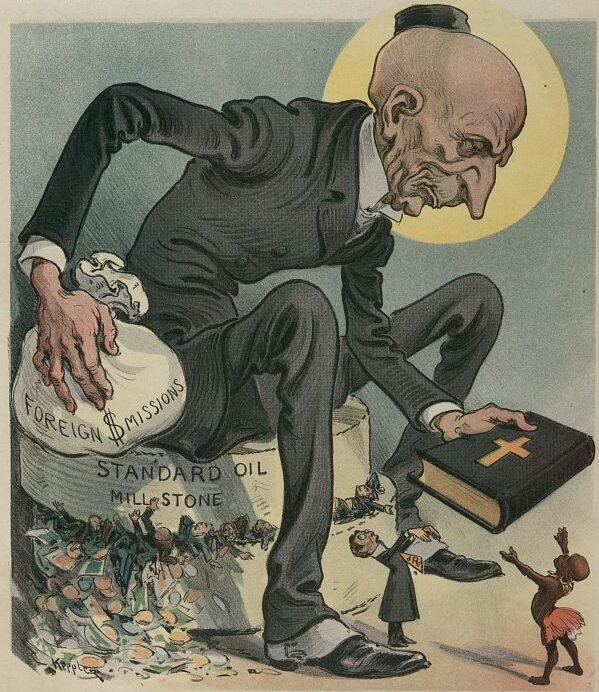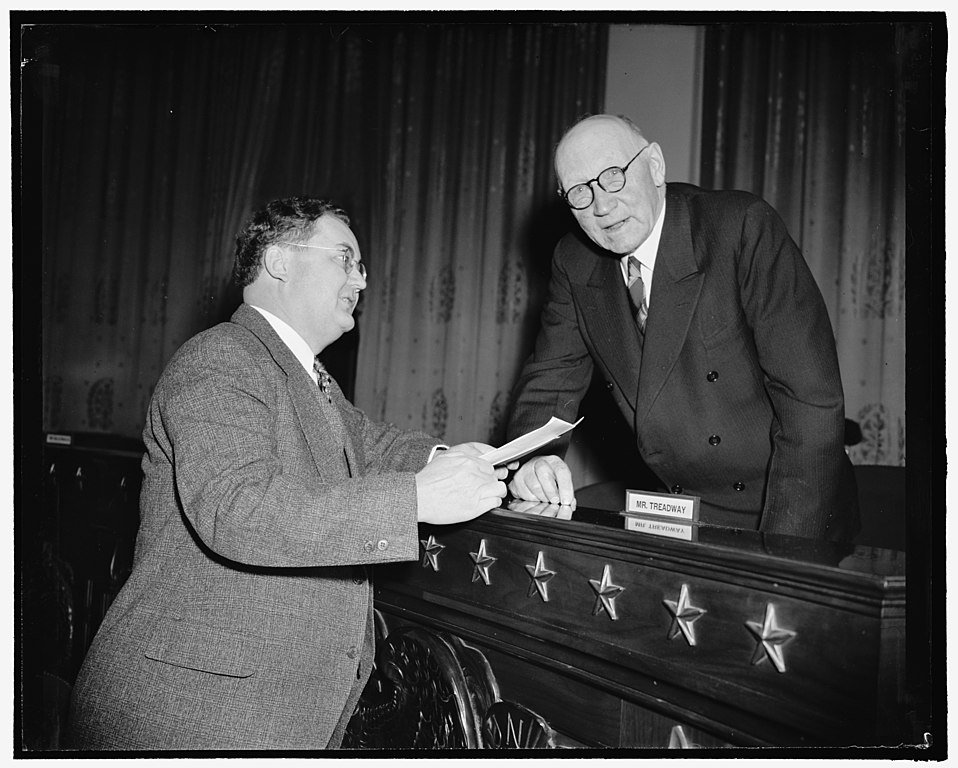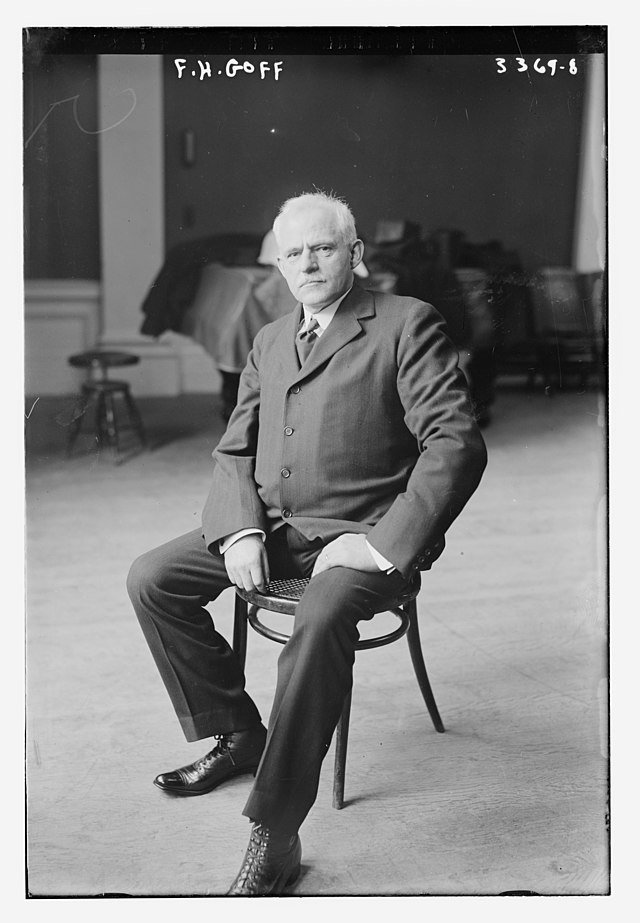14th November 2023
This is the second of a three-part essay mini-series exploring the nature and role of philanthropic foundations. In this part we trace the historical roots of the foundation idea.
(Read part 1 HERE and part 3 HERE)
To find the origins of foundations as we (loosely) defined them in part I of this essay series, we need to look at least as far back as Ancient Rome. The key point comes in 150 B.C.E, when, as Warren Weaver notes in his 1967 book U.S. Philanthropic Foundations, “Roman law further broadened the legal heir concept by declaring charitable organisations to be both “sentient reasonable beings” and also “immutable undying persons””. This gave such organisations the ability to exist as independent entities for the first time. For a long time they still couldn’t receive bequests (i.e. gifts left in a will), but this changed under the reign of Marcus Aurelius (in around 178 AD) and thus, as Weaver puts it, “the foundation idea had been born.”

The subsequent history of foundations in the Roman world mirrored to some extent the way in which the Roman empire itself developed. As the Western Roman empire declined and the centre of power shifted to the East under Constantine and became the Byzantine empire, the context for philanthropic foundations changed dramatically. For one thing, Constantine was a convert to Christianity, so the Christian church now became the dominant player in the provision of social welfare, as well as a powerful new focus for donations (a state of affairs that would hold in the Western world for the next thousand years or so). For another thing, Roman Law underwent a major rewriting and codification under the reign of Justinian I, which put the legal status of charitable endowments on a firmer footing and provided additional protection from the threats of misappropriation, greed and corruption (which up until then had been big problems). As a result, according to John A. McGuckin, “By the sixth century the great philanthropic foundations of Leprosaria, hospitals, orphanages, geriatric homes, and food relief centres 4 had become common in the cities of the Byzantine world.”

We shouldn’t assume, however, that the history of foundations is merely about the Roman world giving way to Christianity, and the Church taking things over (although that is certainly part of the story!) At the same time (in around the 7th century AD) we see the emergence of the waqf, which is essentially the Islamic world’s version of the philanthropic foundation. For a long time it was claimed by scholars that the waqf also had its origins in Roman law, and was therefore merely a parallel development from the same roots, but more recently academic opinion has leant towards the idea that the basis of the waqf idea is to be found elsewhere (specifically in ancient Sassanid law) and that it should therefore be seen as a genuine example of convergent evolution (i.e. where two unrelated things independently evolve similar features). Some scholars (like Murat Çizakça) have gone further, arguing that because there were such discontinuities between the classical world of Rome and Greece and the world of Medieval Europe, the development of philanthropic foundations in Medieval Europe is more likely to have been informed by the Islamic notion of waqf than it is by the earlier Roman notion of Fidecommissium. A fascinating paper from 1987 by Monica Gaudiosi even argues that the creation of one of Oxford University’s oldest colleges, Merton, was directly influenced by its founder’s knowledge of the tradition of waqf, claiming that “were the Merton documents written in Arabic, rather than Latin, the statues could surely be accepted as a waqf”. (Which I’m sure plenty of other historians of the period might take issue with, but it is quite a fun idea to suppose that one of the bedrock institutions of England’s establishment owes such a debt to the Islamic world!)

Whatever the root cause, the medieval period saw big growth and evolution in foundation-like structures in Britain and Europe. At first almost all of these were linked with specific physical institutions, such as almshouses, schools or hospitals (which at this point were understood more broadly as places of “hospitality”, and thus provided board and lodging for travellers as well as medical care), and they were usually under the auspices of the Church (or at least heavily connected with it). Many of the institutions that still exist in some form to this day and lay a claim to being “the oldest charity in Britain” are of this form: e.g. The King’s School in Canterbury (which claims, slightly tenuously it must be said, to trace its origins back to 597 and the arrival of St Augustine in England), or the Hospital of St Cross in Winchester (which dates from 1132).

Slightly later on, towards the 13th century, we then start to get the emergence of secular structures that look a bit more recognisably like charitable trusts as we know them today. In 1282, for instance, the Bridge House Estates was founded as a vehicle to collect tolls for crossing London’s bridges and use them for the upkeep of those bridges (and it is still going strong today, having recently merged with its charitable arm, The City Bridge Trust, to form the City Bridge Foundation). The Church still had a virtual monopoly on the collection and distribution of charitable money, however, and a lot of the giving in this period took place in the form of alms (money to be distributed to the local poor) or chantry (donations to pay for a priest to say prayers for the souls of yourself, your family, or others). There were also longer-term, more foundation-like structures administered by the church, known as doles, where a donor would leave money to the Church as a bequest along with instructions about how it was to be used to help others. In some cases these instructions were hilariously specific and wonderfully weird: for instance, the bequest left by a man named Thomas Gray, who left money to buy “six waistcoats of grey cloth… and six coats of grey cloth” to be given out each year to poor widows in his local parish, or Henry Greene, who left money to pay for… yep, you guessed it, “four green waistcoats” to be provided for four poor local women each year. Even more bizarre is the “Biddenden Dole”, a charitable dole dating from 1134, when a pair of conjoined twin sisters in the village of Biddenden in Kent left 20 acres of land to pay for an annual dole to the poor of bread, cheese and beer. This came to be accompanied by the baking of “Biddenden Cakes” – hard biscuits in the form of the two sisters that were given out along with the dole and were “reputedly quite inedible” – and this tradition is still followed in the village even today.

Anyway, that’s probably enough of weird charitable bequests (for now…) The point is that throughout the medieval period foundation-like structures of various sizes and shapes proliferated. A seismic shock then came in the form of the Reformation, when Henry VIII’s decision to split from the Catholic Church as a result of the Pope’s refusal to sanction his divorce from Catherine of Aragon led to the creation of the Church of England, the rise of Protestantism and the dissolution of the monasteries. In the course of all this, large swathes of the existing charitable infrastructure crated by the Catholic Church were destroyed. In order to fill in the gaps in provision left by this destruction, wealthy Protestants now went on a frenzy of bequest-making in the 16th and 17th centuries. This was also, it has to be said, part of an overt propaganda war in which Protestants were keen to use their charity to demonstrate that they were better and holier than their Catholic forebears. The metaphysical poet and preacher John Donne, for instance, wrote in 1619 (with the obvious zeal of the convert, since he had been raised as a Catholic before converting to Anglicanism), that: “there have been in this kingdome, since the blessed reformation of religion, more publick charitable works perform’d, more hospitals and colleges erected, and endowed in threescore, than in some hundreds of years of superstition before”.
Moving on from the efforts of Protestants to use philanthropy to dunk on Catholics, as we get into the 18th and 19th centuries the context for charity and for foundations changes significantly. In particular, the impact of industrialisation and the massive shift of the population from urban to rural areas sees the emergence of a working class and a fundamental change in the nature of poverty and other societal challenges. As a result, many of the existing methods of charity, which had been based on small-scale action at the parish level and often involved direct contact with recipients, were no longer fit for purpose. As a result, those interested in addressing society’s problems began to come together and create models of “associated philanthropy”, which gave rise to the notion of the charitable organisation as we know it today i.e. an organisation that collects resources from philanthropically-motivated individuals (and institutions) and uses them to deliver services and interventions aimed at addressing a particular problem or furthering a particular cause. This approach proved so successful, that according to the historian David Owen “the 19th century saw the charitable organisations come to full, indeed almost rankly luxurious bloom”. From the point of view of our focus on foundations, the key point is that there was a new outlet for them to achieve their goals – as rather than having to deliver services themselves, they could now give money in the form of grants to charitable organisations to do the work for them.
The Victorian era saw a new golden age of philanthropy, as a combination of vast industrial fortunes, religious fervour, reforming zeal and civic pride led to the establishment of many new organisations and institutions in the UK that are still with us today – including a significant number of new foundations. However, one of the defining moments for foundations in this era came not as a result of the creation of new endowments, but as a result of the legacy of past ones, with concerns about the “dead hand of the donor” coming to a head in mid-19th century London. Many writers and thinkers, from Benjamin Franklin to the French Revolution economist Anne-Robert Jacques Turgot, had long expressed concerns that by providing a structure that allowed an individual’s wishes to be carried out in perpetuity, endowments enabled dead donors to “reach out of the past” and exert undue influence on the lives of those living in the present. In mid-century London, growing anger about the proliferation of dormant parochial trusts, many of whose charitable aims and objects were now so archaic that they could never be fulfilled: for instance a trust solely dedicated to providing funds for killing ladybirds on Cornhill in the City of London, or (perhaps apocryphally) a trust dedicated to providing bundles of wood for burning heretics (which was obviously not that much use by the 19th Century!) This led to calls for reform, led by campaigners like Sir Arthur Hobhouse (who published a whole series of essays on “The Dead Hand” outlining his objections). Eventually this led to the creation of new powers that enabled these dormant trusts to be opened up and collected together into the new City Parochial Trust (and also gave rise to the modern form of the Charity Commission).

At this point let us cross the Atlantic and pick up the story in America, as this is where the next big developments come. Historically the US had been very resistant to the idea of endowments, partly due to concerns about the “dead hand of the donor” as outlined above, and partly due to a wider distrust of formalised structures for voluntary activity and the potential they carried for subverting US democracy. Despite this antipathy, some foundation-like vehicles had emerged in the US by the late 19th century, such as the Peabody Fund, which was founded by George Peabody in 1867 to give aid to the South following the civil war; or the Baron de Hirsch Fund, founded in1891 by Baron Maurice de Hirsch to assist in the Americanization of Jewish immigrants. It is noteworthy that in both cases, although the donors had American links they were resident in the UK, and also that their foundations followed the English model of having relatively narrowly defined objects. This was all about to change, however, with the introduction of a new development that was to revolutionise the foundation world and set the template that has come to dominate debate ever since: the general-purpose (or open-ended) foundation.
The pivotal moment here comes right at the start of the 20th century, when, all of a sudden, foundations began to be established with extremely broad purposes, encapsulated in phrases like “promoting the well-being of mankind”. As many scholars have noted, this marked a significant, and very surprising, turning point. Barry Karl and Stanley Katz argue that:
“Although the philanthropic trust seems obvious in retrospect, it was both unlawful – given the standards of British and American trust law – and unforeseen at the moment it sprang into multiple existence in the first decade of the twentieth century. The philanthropic foundation thus represents the fusion of traditional charitable organisation, ancient methods for the perpetuation of family wealth and novel social, legal and intellectual ideas.”
Very quickly it was the case, according to Anheier and Toepler, that: “Given the significance of this new orientation of foundation work and the large amount of resources that went into it, the first of these foundations came to symbolize a new era of institutional philanthropy, pushing the more traditional aspects of foundation work to the background.” Some argue that we should see this as a distinct break with the history of foundations that had come before. The political philosopher Rob Reich, for instance, argues that: “The modern grant-making foundation in which private assets are set aside in a perpetual, donor-directed, tax-advantaged endowment with a fraction of the assets distributed annually for a public purpose is a recent institutional form, distinctly American, and no older than the early 20th century.” Others see more continuity: Anheier and Leat, for instance, argue rather sardonically that “the remarkable achievement of 20th-century US philanthropy was to modernise a basically European institution that had been discredited twice.” Whichever view you take, however, it is inarguable that the paradigm established by the giant new general-purpose foundations of the early 20th Century US has come to dominate our understanding of what a foundation is (and arguably of what “philanthropy” is more broadly, as well).

(Image from Library of Congress)
We should note that just because the new general-purpose foundation model proved successful, that didn’t mean it was uncontroversial by any means. J.D. Rockefeller, the billionaire oil tycoon, became a particular lightning rod for this controversy, to the extent that his efforts to obtain a federal charter for his new foundation met with such fierce congressional opposition that he was eventually forced to abandon them and obtain a charter of incorporation from the New York State legislature instead (which he did in 1913). During the congressional hearings held to consider Rockefeller’s application, the Reverend John Hayes Holmes testified that in his view “this foundation, its very character, must be repugnant to the whole idea of a democratic society”. Similarly an article in the Springfield Republican from 1910, when Rockefeller’s plans to establish a foundation first became known, argued that:
“Just as the enormous influence of the monasteries in the Middle Ages was based largely upon inalienable property and its usufruct, so these private incorporated foundations, living forever, would attain an influence anti-social and anti-democratic to an extraordinary degree. With financial power would go the determination to shape and direct, and thus the benevolence and the charity of a society whose future needs and aspirations we cannot forecast would be controlled by the sinister influence of the dead hand.”
Although concerns such as these dogged foundations in the first decades of the 20th century, they did abate over time. As Karl and Katz note, this was partly thanks to the significant role that some foundations (notably Rockefeller) played in post WWI rebuilding efforts in Europe, and also thanks to the evident success they had had through their grantmaking in eliminating various illnesses that had previously posed major health challenges in the US such as pellagra, ringworm, typhoid and yellow fever. As a result:
“In the 1920s it was generally accepted that the foundations were doing good and it was not really until the very different years following the Second World War that they encountered a new wave of public suspicion.”
There was extraordinary growth in the US foundation sector in the 1940s and 1950s: Foundation Center data from 1983 shows that the number of large foundations (those with over $1m of assets or at least $100,000 in annual grants) rose from 367 at the end of the 1930s to over 2,000 by the end of the 1950s. And this brought with it new scrutiny and increasing scepticism (or even cynicism) from the public and the press: foundations were now seen as a way for the rich to avoid taxes whilst doing the bare minimum of activity that could be construed as charitable. This cynicism is wonderfully typified by Ian Fleming’s James Bond short story “The Hildebrand Rarity” from 1960, in which bad guy Milton Krest explains to his dinner guests:
“Ya see, fellers, it’s like this. In the States we have this Foundation system for the lucky guys that got plenty dough and don’t happen to want to pay it into Uncle Sam’s Treasury. You make a Foundation – like this one, the Krest Foundation – for charitable purposes – charitable to anyone, to kids, sick folk, the cause of science – you just give the money away to anyone or anything except yourself or your dependants and you escape tax on it. So I put a matter of ten million dollars into the Krest Foundation, and since I happen to like yachting and seeing the world I built this yacht with two million of the money and told the Smithsonian – that’s our big natural history institution that I would go to any part of the world and collect specimens for them. So that makes me a scientific expedition, see? For three months of every year I have a fine holiday that costs me just sweet Fatty Arbuckle!” Mr Krest looked to his guests for applause. “Get me?”
This atmosphere of increased general scepticism provided the backdrop for some more specific concerns about foundations as the 1960s wore on, including a concern that the relationship between certain large companies, their associated philanthropic foundations and their founders were becoming problematic. By 1964, according to Ben Whitaker, “the investments of half the fifty largest foundations – including at least nine of the twelve which are biggest of all – were overwhelmingly dominated by one donor stock”. The problem was that this was essentially a tax avoidance wheeze (pioneered by Henry Ford), in which the company founder passed over control of a large portion of stock in his company to the foundation (thus neatly avoiding tax) but was still in reality able to retain control of the stock for corporate purposes. (For more on this, see this WPM article about the corporate ownership of nonprofits). Growing anger about this situation, led by the populist Democratic Congressman Wright Patman, led to a watershed moment in 1969: the 1969 Tax Act, which brought in sweeping changes to the tax treatment of nonprofits; including a new legal (or at least taxation) designation for “private foundations”, and new rules placing limits on their ownership of stock from a single company. This proved to be a significant moment in shaping the US nonprofit sector as it stands today. (For more on this history, check out this series of articles from HistPhil on the 1969 Tax Act).

It is worth saying that at the same time as the growth of the big general purpose foundations in the US in the 20th century, another development was taking place which adds an important additional element to our story about the history of foundations: the emergence of Community Foundations. This can be traced back to 1921, when Cleveland businessman Frederick Goff developed an idea for a new type of philanthropic vehicle that could allow donors to establish charitable trusts within a collective fund, which they could then direct towards local causes or leave up to the administrators of the fund to distribute. In large part this was Goff’s attempt to address the problem of the dead hand, since any money within the community foundation would never go dormant as the administrators would always have the ability to use if for local grantmaking, even if the original donor was no longer around. Community Foundations (or CFs) grew relatively slowly in number between 1914 and 1960, but after 1960 they increased more rapidly and also expanded their geographic distribution, so that by 2021 Candid reported that there were 1,184 CFs in the US (up from 129 in 1960). The CF model has also proven to be a successful export: there are now 2,241 CFs around the world according to Candid’s Community Philanthropy Directory. The model first came to the UK in 1975 (in Swindon), and was then given a boost by some funding from a group of US and UK foundations to pilot the approach elsewhere in the late 1980s; as a result, there are now 47 accredited CFs across the UK.

The wider story of foundations in the UK in the second half of the 20th century and into the 21st has not really been told anywhere in a coherent way (as far as I am aware, at least), but we can identify at least a couple of key points that are relevant to our understanding of the context as it exists today. The first is that the creation of the Welfare State (traditionally associated with the launch of the NHS in 1948, but in train well before that) marked a turning point for philanthropy and voluntary activity in the UK, as the boundaries between what citizens expected the state to provide and what they saw as the domain of voluntary provision shifted significantly. This led existing organisations (including foundations) to rethink what their role was, and many underwent a shift away from service provision towards campaigning and advocacy work designed to challenge the state and move society forwards.
The second point is that as the post-War UK economy grew from the 1960s onwards, new wealth was created and this led to the creation of a new wave of foundations. Some of these were associated with major British companies and their founders, and many maintained large corporate stockholdings; such as the Wolfson Foundation (majority shareholder in Great Universal Stores), the Rank Foundation (Rank Plc), Nuffield Foundation (Morris Motors), The Gannochy Trust (Bell’s Whisky) and The Grove Charity Management Trust (George Wimpey construction). Unlike the US, no specific legislation was introduced to outlaw this kind of corporate stockholding by foundations but it does seem to have largely died out over time (perhaps because the tax advantages it brought were not as compelling as those available in the US prior to 1969?) But even as the UK foundation sector grew, there were concerns that it remained opaque and largely unprofessionalised. Ben Whitaker reported in his 1974 book The Foundations, for instance, that “In Britain, less than ten of the major foundations are reckoned to have an adequate staff. (Visitors from Ford are astonished to find several of the big UK foundations run by “a general and a blond”).”
So where does that leave us? We will explore in part 3…

